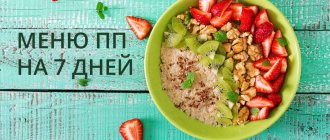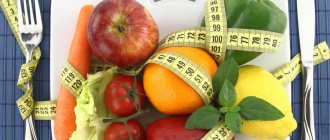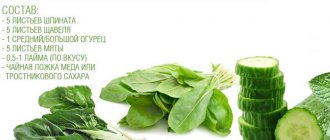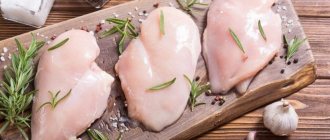The most effective and popular in the treatment of obesity and simply for getting rid of excess weight is considered a low-calorie diet (LCD). It would seem that it could be simpler: they reduced the daily calorie intake, forced the body to use up fat reserves, and all that remains is to wait for the result. This is where the surprises begin: either the weight stays or even increases, then hungry fainting occurs, then muscle mass disappears instead of fat. The thing is that such a food system requires a special approach and competent organization.
Necessary educational program
90% of all available diets are low-calorie, and this is scientifically explained. To force the body to use up its own fat reserves, you need to create an energy deficit. This can only be done by reducing daily calorie intake. For this purpose, some nutritional systems propose to minimize or completely remove carbohydrates from the diet, others - fats, and others are based on a specific category of products (vegetable, protein).
Everyone is free to choose how many calories to reduce their daily intake. Most diets suggest 1,200 for women and 1,500 for men. However, you should not blindly follow these patterns. If your goal is effective weight loss without harm to health, consider a few points.
Daily calorie content
Let's assume that two women chose the same low-calorie diet with a daily intake of 1,200 kcal. One of them is a 20-year-old student, an activist, constantly on the move, involved in fitness, gained 5 extra pounds during an illness while on bed rest and wants to get back into shape. The other is a 45-year-old department head who leads a sedentary lifestyle, has her own driver, and is constantly struggling with excess weight, which by this time has accumulated at least 15, or even 20 kg.
In the first case, a low-calorie diet with a daily allowance of 1,200 kcal will allow a girl to lose her 5 kg in just a week, well, in a maximum of 2. In the second, the results can be disastrous: by the end of the month the minus can be 4-5 kg (or, alternatively, weight in general will rise) + hypertension and other side effects with constant deterioration in health.
Conclusion. Whatever diet you choose, the daily caloric intake should be determined in accordance with your individual parameters: age, BMI, height, physical activity. But do not blindly take the approximate figures that are offered in the descriptions of the documentation.
How to reduce calories
There are special formulas for calculating daily caloric intake. You will need two numbers: the first will show how many kcal you need to consume daily in normal life, the second - for weight loss. The corridor (the difference between them) can range from 300 to 1,500 kcal. And here 90% of those losing weight make a total mistake: starting tomorrow (Monday, the 1st) they went on a diet. Before this, they consumed 2,500 kcal, and now - 1,200.
The body will be in a state of shock. He will not be able to adapt to a new caloric intake so quickly. The result is a deterioration in health up to fainting and a sharp decrease in performance. As for weight, in the first 3-4 days the minus can be significant, but only due to the removal of toxins and excess fluid. But then the scenario disappoints many: the decline will be catastrophically low, or may stop altogether (the so-called plateau effect). An even more unpleasant moment is when weight loss occurs, but fat deposits do not go away, because instead of them proteins, which are vital for the body, begin to be consumed. As a result, the figure leaves much to be desired, and the state of health becomes worse and worse every day.
Conclusion. You need to prepare your body for the upcoming weight loss. Every day, reduce your daily caloric intake by 150-200 kcal until you reach the minimum value that suits you (calculated using the formula). For those with a corridor of 300 kcal, entry will take only 2 days, for those with 1,500 - 10, but believe me: it’s worth it. As a result, the weight will be lost evenly and without harm to health.
And then organize your way out of the diet in exactly the same way: gradually increasing your daily caloric intake by 150-200 kcal until you reach your norm.
Mechanism of weight loss
The easiest way to lose weight is on a low-calorie diet. This explains its popularity. Its goal is to make a person spend more calories per day than he receives. To achieve this, physical activity increases and the daily diet decreases. By creating an energy deficit, you force the body to use up its own reserves. It can use either fats or proteins. The latter option should not be allowed, since this is muscle and connective tissue that performs important functions. To protect them from breakdown, your diet should have enough protein foods and you need to constantly exercise.
However, keep in mind that the fat burning process is quite long and will not begin immediately. The body needs to adapt to new living conditions and only then, as a result of improving overall metabolism, lipolysis will accelerate. In the first days, weight loss occurs due to other processes. The work of the stomach is facilitated (less food comes in, it is healthy), and it is freed from the “garbage” accumulated in it.
This in turn leads to blood purification - the access of oxygen to tissues increases, and it is known as a catalyst for fat burning. The functioning of the liver and kidneys improves, which will allow you to get rid of excess fluid that forms swelling.
A low-calorie diet triggers all these processes in the body, and they, in turn, lead to weight loss. The number of kilograms lost will depend on two indicators: by how much the daily ration will be reduced and on the duration of fasting. On average, if you sit on 1,200 kcal for one week while simultaneously increasing physical activity, you can lose 4-5 kg. But keep in mind that the pace may decrease further, since the body will have to lose weight not by removing harmful substances and excess water, but by burning fat, and this is a rather difficult and slow process.
Why calorie restriction and aging are linked
In the process of evolution, animals had to develop a way to cope with hunger, that is, only individuals capable of overcoming food shortages could survive, so that their “good” genes could later help their offspring.
For example, this is possible with delayed puberty, when the animal waits for the necessary resources to appear, and then prepares to mate in order to produce offspring, a kind of sexual hibernation.
The fact is that gestation requires a huge amount of energy (food), so the animal will not be able to survive this period without food. And even if this happens, his offspring will most likely die in the very first moments after birth from starvation.
Thus, in the process of evolution, this system was successfully “tested”. This is why genes that slow down aging are stimulated by hunger. Just like the hormone insulin, which is in “standby mode” during abstinence from food.
Therefore, it is not surprising that the slower your metabolism, the longer your life expectancy. And vice versa. In this sense, a low-calorie diet can become one of the tools in the fight for longevity.
Contraindications
Contraindications for each low-calorie diet will be specific. For example, people with kidney disease should not choose a protein diet, and a carbohydrate-free diet is not suitable for those whose work involves intellectual activity. Therefore, look at this item in the power system that you have chosen.
However, there is a general list that nutritionists have compiled for all NDCs that offer a reduction in daily caloric intake to 1,200 kcal and below:
- diseases of the kidneys, liver, heart, gastrointestinal tract;
- pregnancy, lactation;
- diabetes;
- cholecystitis;
- infections;
- weak immunity;
- gallstones;
- bronchial asthma;
- alcoholism;
- hypertension and hypotension;
- tendency to constipation;
- oncology;
- rehabilitation after a heart attack or stroke;
- age up to 16 and after 65 years.
Before losing weight, you should undergo a medical examination and, based on its results, consult a doctor. You need to tell him what nutrition system you have chosen and how many calories you plan to reduce your daily diet. Based on this data, he will make recommendations that should be followed.
Pros and cons of the 1200 calorie low calorie diet
Pros of the diet:
- Even if you lead a sedentary lifestyle, the diet will allow you to achieve the desired results.
- The diet menu is balanced.
- Harmful products are prohibited.
- The diet can be rearranged at your own discretion.
- The effect comes quickly.
Disadvantages of the diet:
- It is necessary to count kilocalories.
- At the very beginning of the diet, you may experience a feeling of weakness and drowsiness, as the daily caloric intake is sharply reduced.
- If a person engages in strenuous sports or experiences significant physical exertion, this diet is not suitable for him.
Options
Depending on the timing:
- short-term: for 3 or 5 days;
- average duration: 7, 10, 14, 21 days;
- The longest low-calorie diet is 1 month (doctors do not recommend losing weight on such an energy-deficient diet for longer than this period).
If you need to lose 3-4 kg, a short-term option is suitable. To lose weight by 5-9 kg, choose a medium-long diet. If your excess weight is 10 kg or more, you will have to be on a low-calorie diet for a month.
Depending on complexity:
- gentle (light, simple): reducing the daily intake by 300-500 kcal (on average, caloric intake will be about 1,800 kcal);
- medium difficulty: reduction by 600-800 kcal (1,500 kcal);
- hard (strict): reduction by 900 kcal or more (less than 1,200 kcal);
- An emergency low-calorie diet involves maintaining a daily caloric intake of 400-500 kcal for a short period of time (3-5 days).
The safest ones are gentle and medium difficulty. But in the first case, the results will be minimal. Therefore, nutritionists recommend nutritional systems with a daily calorie content of about 1,500 kcal. As this indicator decreases, health risks will proportionally increase.
Depending on the diet:
- high protein/protein;
- no-carb/low-carb;
- fat free/low fat;
- vegetarian/lenten;
- drinking.
Food and Aging
Growing up requires energy, and energy comes from food. How exactly? By oxidizing food and producing energy units - ATP. This process occurs in the “power plants” of all living beings—the mitochondria.
But there is another side to this process, a dark side. Another product of mitochondria is free radicals, a side effect of ATP synthesis. They are the ones that harm other molecules, causing aging.
Thus, there is a chain of relationships:
Food = free radicals = damage (mutations) = disease and shorter life expectancy.
So can a low-calorie diet promote health and longevity by slowing down the aging process?
The best low-calorie diets
Rating
- Northern.
- South.
- ABC.
- Protein.
- Model.
- Drinking.
- Japanese.
- Maggi.
- Protasov's diet.
- Malysheva's diet.
Review of the most popular
North and South
Two diametrically opposed diets have recently gained great popularity - Mediterranean (southern) and Scandinavian (northern, Nordic, Norwegian). However, they have many common points: they are based on a healthy diet and are low-calorie. If your goal is to lose weight without harming your health, choose them.
Basic principles:
- reducing calories to a safe level (1,400-1,600);
- limiting animal fats, salt and spices;
- emphasis on seasonal fruits and vegetables characteristic of a particular region;
- all dishes are prepared at home;
- giving up trans fats and fast food.
The basis of the diet on the Mediterranean diet is fruits and seafood (for lists of products, menus, recommendations, see. If you lose weight according to the Scandinavian method, the menu includes berries, reindeer meat and fish, which is found mainly in northern waters.
Protein
A low-calorie protein diet is good because, when simultaneously exercising, it prevents the breakdown of muscle fibers (protein is a building material for them). This forces the body to burn fat deposits. Has many options. It can be an emergency three-day and a month long. The daily calorie level ranges from 800 kcal to 1,800. The basis of the diet with a minimum of carbohydrates and fats is:
- chicken or turkey breast;
- egg white;
- mushrooms, nuts and legumes, if we talk about vegetable protein;
- all dairy products with a low fat percentage: cottage cheese, milk, kefir, hard cheese, yogurt, natural yogurt.
Good results can be achieved with a low-calorie dairy diet, which is also a protein diet. It involves active consumption of milk during the day (500-600 ml) while limiting other products.
ABC
This is the lowest calorie diet. Originally developed for training American military personnel. ABC is the short name for the military camp where this system was practiced: Aha Boot Camp. The daily calorie content on different days varies from 0 to 850 kcal, but does not rise higher. Scientists were involved in calculating these indicators, so there is no accident in them. For example, this is what the first week’s meal plan looks like:
These numbers are gradually decreasing every week. Two diet options were introduced for a period of 30 and 50 days. The latter was the most extreme and was not followed by everyone. At the same time, military personnel had to actively engage in sports, and the diet was predominantly protein.
Despite warnings from nutritionists and doctors that the ABC diet is an extreme way to lose weight and is not intended to be followed at home, many people practice it. Of course, few people can withstand 30 or even more so 50 days on such a diet, but 3, 5 and 7-day options give good results. True, with a lot of side effects and complications.
Study of the effect of fasting
American gerontologists have studied how a low-calorie diet works on monkeys. The animals of the two species were kept on a diet whose caloric content was 30-40% less than that of primates, which have free access to food.
During the experiment, it was found that in monkeys whose diet was limited in calories, the levels of glucose, insulin in the blood and the hormone IGF-1 R (insulin-like growth factor) decreased. The researchers also recorded a decrease in body temperature, fat content and energy expenditure. And, most importantly, there was a decrease in the incidence of cardiovascular diseases and cancer.
In addition, the age-related decline in one of the markers of aging, DHEA, slowed down. Moreover, it has been established that it is not a matter of any specific product, but a general reduction in calories consumed has a geroprotective effect.
Laboratory mice whose diet was also cut by 40% in calories showed a 150% increase in life expectancy. And most importantly, they had a much longer period of health.
Basic principles
Any low-calorie diet requires compliance with a number of general rules, without which it may be ineffective.
- Fractional meals.
- Dinner - 3 hours before bedtime.
- Prohibited methods of cooking: frying, salting, marinating.
- The basis of the diet is proteins, a minimum of fats, mainly of plant origin, and some complex carbohydrates.
- Entry and exit should be gradual, with a gradual decrease and, accordingly, increase in the daily calorie intake.
- Drink 1.5-2 liters of regular water per day.
- Sports activities are required. Strength loads in them should be at least 30% (for women) and 50% (for men) of the entire program, provided there is a sufficient amount of protein in the diet.
The main rule: with a low-calorie diet, you must lead a healthy lifestyle, otherwise side effects and deterioration in well-being cannot be avoided. Adequate sleep, fresh air, a clear daily routine, a schedule of alternating work and rest, a minimum of worries - all these are necessary components of this nutrition system.
Smoking and alcohol are incompatible with it. If there is an excess of nicotine against the background of insufficient daily calorie intake, intoxication of the body can occur, which will have to be treated in a hospital setting.
Dairy and eggs
To prevent the diet from harming the musculoskeletal system and muscles, it is necessary to include dairy products rich in protein and calcium in the diet:
- Egg white. It contains only 52 kcal, 14% of the daily value of protein and 36% of the daily requirement of selenium.
- Mozzarella. 295 kcal and 31% daily value of protein. And also vitamin A, vitamins B2, B5, B6, B12. In addition, cheese contains 60% of the daily value of calcium, 78% of phosphorus, 50% of selenium, 51% of sodium and a whole list of essential microelements. Data is per 100 grams of product.
- Low-fat yogurt .
58 kcal per 100 grams, a huge amount of protein and calcium, as well as phosphorus and selenium.
Questions and answers
How to properly organize the entrance?
Suppose you need 2,400 kcal per day for normal functioning of the body, and 1,500 for weight loss (calculated using formulas taking into account individual parameters). The difference is 900 kcal. Login will take 6 days if you reduce your caloric intake by 150 kcal daily. This can be done by eliminating harmful foods from the diet (one or two every day) and limiting portions (by 50-60 g for each meal daily).
How to get out?
If you organize the entrance correctly, exiting the low-calorie diet will be problem-free, since it will completely mirror it. In 6 days you need to overcome the corridor of 900 kcal (if we take the figures given in the example above as a basis - 2,400 and 1,500 kcal). To do this daily:
- increase daily caloric intake by 150 kcal;
- we include in the diet 1-2 products from the list of prohibited, but least harmful: these can be fatty fish, meat, dairy, high-calorie fruits and vegetables;
- increase the serving size by 50-60 g at each meal.
Why does weight gain?
Unfortunately, this problem is quite relevant. There may be several reasons, and only after eliminating them can you get rid of this unpleasant phenomenon.
- Reason 1
With the occurrence of energy deficiency, the body switches the functioning of organs to a special mode when metabolism is inhibited. This reduces the rate of both lipolysis and fat burning. Slow metabolism is the main provocateur of weight gain.
How to eliminate it: include in your diet foods that speed up metabolism, drink special medications or use folk remedies, choose a different diet, review your training program.
- Reason 2
With intense training and a protein diet, an increase in muscle mass is observed, which is much heavier than fat tissue. This is what leads to weight gain.
How to eliminate: reduce the intensity of training, limit strength training, reduce protein intake. If you want a beautiful, sculpted figure and you do not plan to slow down the growth of muscle mass, just wait for the burning of the main fat tissue by choosing a long-term diet option.
Weight can also be gained due to swelling (if, for example, the drinking option is chosen or the basis of the diet is watermelon), taking medications (hormonal contraceptives, glucocorticosteroids), and the development of certain diseases. Solving this problem in each individual case must be approached individually.
What side effects should I expect?
If you have chosen a diet with a daily caloric content of at least 1,500 kcal and entered it correctly, in the absence of contraindications, usually no unpleasant sensations arise. Otherwise, you will have to deal with side effects such as:
- lethargy, decreased performance;
- irritability;
- insomnia;
- muscle spasms and pain;
- dizziness, headaches;
- pressure surges;
- nausea, pain in the stomach;
- problems with stool.
How to deal with side effects?
If the main side effects (lethargy, irritability, poor health) are pronounced and reduce the quality of life, slightly increase the daily calorie intake by introducing carbohydrates into breakfast. Start your day with oatmeal, allow yourself to eat a bun or donut, add a teaspoon of sugar or honey to your coffee. It is better to make such concessions than to break off the diet ahead of time and never achieve results.
Sometimes on low-calorie diets, quite severe muscle pain occurs. It can be caused by two factors: either they are too intensively broken down instead of adipose tissue (with a lack of physical activity and a too low-calorie diet), or it is a sore throat (with intense exercise, if before that they led a predominantly sedentary lifestyle). In the first case, you need to increase both physical activity and the level of daily caloric intake. In the second, endure it; this pain is temporary and should pass soon. If this does not happen, you may have chosen the wrong training program, consult a trainer.
If you are constipated, there are many low-calorie laxatives that can help relieve the problem. You can drink a glass of kefir or 100 ml of fresh beet juice in the evening - they will not disrupt your diet, but if you use them regularly in the morning, you will be able to go to the toilet normally. If they do not help, this may be due to more serious disorders of intestinal motility, in which case contact a gastroenterologist or therapist.
Brief conclusions
- Energy in the human body is produced by oxidizing food and producing energy units - ATP. As a result, free radicals are produced.
- Free radicals damage their “close environment” - mitochondrial DNA, as well as other cell components, such as proteins.
- As a result, mutations accumulate in mitochondrial DNA, which leads to disruption of cell functionality, that is, to oncology and age-related diseases.
- The “leakage” of free radicals can be curbed by reducing the caloric intake of the diet.
- Calorie restriction slows down the aging process, thereby maintaining the functionality of the body and protecting against age-related diseases.
Product Lists
Each individual low-calorie diet prescribes what can be eaten in accordance with its principles and what cannot be eaten. If you take the classic version, you can create lists of permitted and prohibited products yourself. The first contains the most low-calorie and healthy ones, the second - the most high-calorie and harmful. Approximate options may be as follows.
Allowed:
- chicken fillet, meat by-products (kidneys and heart);
- lean fish, seafood;
- low-fat dairy products: milk, kefir, cottage cheese, natural yogurt;
- vegetables;
- fruits (mainly citrus fruits);
- all berries;
- any greens;
- all mushrooms;
- grains - limited;
- Drinks include green tea, freshly squeezed juices without added sugar, infusions and herbal decoctions.
Prohibited:
- fatty meat: pork, lamb, duck, goose;
- sausage;
- fatty fish: salmon, eel, as well as any canned food in oil;
- soft cheeses, dairy products with a high percentage of fat, cream, sour cream, fermented baked milk;
- dried fruits;
- nuts;
- flour and pasta products;
- sweets;
- sauces such as ketchup and mayonnaise;
- store-bought juices, soda, alcohol, energy drinks.
The lists of permitted and prohibited foods for each individual diet may be different.
Menu for the week and month
The daily menu for a low-calorie diet is compiled taking into account the chosen option. The following is formulated for a diet with a daily caloric intake of 1,500 kcal (optimal option), in compliance with the basic principles of proper nutrition:
Making a menu for a month for every day is much more difficult. You can simply repeat the weekly diet so as not to count your daily caloric intake again. Or use this tough option, which involves 1,200 kcal:
Diet menu for one day
The main principle of such nutrition is to eat protein and carbohydrate foods. Products can be combined or alternated. The main requirement is not to consume more than 800 kcal per day, and the second dinner should include only animal proteins.
Allowed calories are divided into 3 times, that is, breakfast, lunch and dinner. Lunch accounts for the bulk of the food.
Nutritionists recommend distributing calories this way:
- breakfast – 250 kcal;
- lunch – 300 kcal;
- dinner – 250 kcal.
So, an approximate protein menu for one day:
Breakfast (to choose from):
- eggs (2 pcs.), a whole grapefruit, tea or coffee without sugar, you can add 2 teaspoons of milk;
- 100 gr. low-fat cottage cheese with 1 tablespoon of low-fat sour cream, tea or coffee without sugar.
Lunch is the main meal, so you should eat as much as you need. We offer two lunch options:
- salad of cucumbers, tomatoes and bell peppers (seasoned with 1 tablespoon of sour cream with the smallest percentage of fat content), boiled eggs (2 pcs.), tea or coffee without sugar;
- 100 g chicken breast, steamed root vegetables (you can use them to make a tasty and healthy dietary soup, but only without salt).
Dinner - to choose from:
- lean beef (100 g), raw vegetables (no more than 150 g), 250 ml skim milk;
- egg, sliced cucumbers and tomatoes, 250 ml skim milk;
- 100 g of cottage cheese with zero fat content, a glass of kefir.
If you want, then instead of meat you can eat boiled fish or seafood, only in the same proportion. You can eat any vegetables except potatoes, but you should exclude grapes and bananas from fruits.
An approximate carbohydrate menu (we distribute the number of calories in the same way as with protein).
We choose from two options for breakfast:
- oatmeal (cook in water or milk) with an apple, a cup of tea;
- fruit salad with natural yogurt.
Lunch – one of the options to choose from:
- salad of cucumbers and tomatoes based on sour cream (minimal fat content), boiled or baked potatoes, tea without sugar;
- buckwheat porridge (cook it so that it is as crumbly as possible), salad from stewed vegetables (serving no more than 200 g).
Dinner:
- low-fat kefir, fresh fruit (except banana and grapes);
- salad of cucumbers and tomatoes based on low-fat sour cream, a cup of coffee without sugar.











